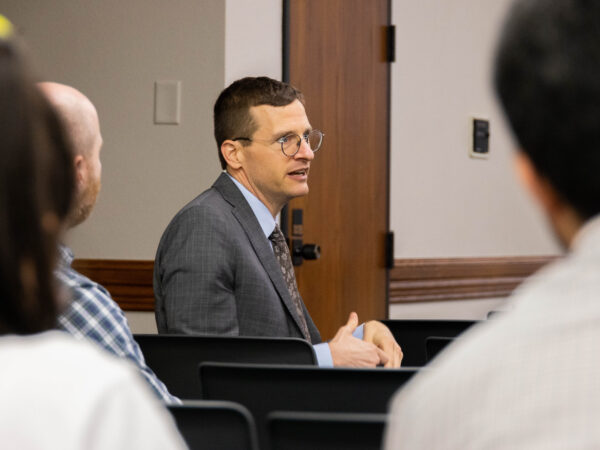
Research Highlights Impact Of Learning By Teaching
A unique phenomenon with no explanation. By teaching a computer how to solve an equation, research shows a student also learns.
Discovering the reasoning behind that phenomenon is a top priority for Dr. Noboru Matsuda, associate professor of cyber STEM education in the Department of Teaching, Learning and Culture. He is currently involved in three National Science Foundation (NSF) grants related to designing and testing educational technology
Dr. Matsuda’s research involves the creation of artificial intelligence technologies that you can teach. He uses this technology for students to learn by teaching. Students are asked to teach the computer agent how to solve an equation. In turn, the students learn by teaching. Dr. Matsuda and his team also built scaffolding technology to help teachers understand how best they can teach.
Dr. Matsuda’s technologies have been used by more than 2,500 students. The data has shown that if the students teach the computer how to solve an equation, they also learn.
“At the beginning, they don’t know how to solve equations and teach the agent very incorrectly. On day four, they magically manage to teach. It’s an interesting phenomenon.”
Dr. Matsuda admits he does not have a clear answer as to why students learn better by teaching. In fact, as a professor, he still learns something new about the way his students learn each semester. He hopes his latest research will help find the sweet spot between the teaching and learning.
“Learning how to solve equations by teaching is an interesting phenomenon, but the data clearly shows students actually learn by teaching. I’m still trying to understand it. It would be nice if we could find that ah-ha moment. There must be an ah-ha moment for every single student.”
Dr. Matsuda’s latest grant, which was awarded in September, proposes the building of a scalable cyber learning platform for adaptive online courses. The goal is to provide effective online instruction for students, an efficient way to build online courses and learning data for researchers to determine how students learn in an adaptive online course.
The project will use a web browser to build an interface for students to solve problems. It will support the creation of cognitive tutors and their seamless integration into online courses.
“You have the interface you made, you already told the computer how to solve it and now the computer can use that same interface to teach students how to solve problems.” The project will also measure how well the courses promote facets of student learning such as synergetic competency and engagement.
“My dream, in five years, is to make an adaptive online course for high school students to prepare for the SAT, math in particular. Our hypothesis is that the nationwide average of SAT scores would increase,” explained Dr. Matsuda.
Dr. Matsuda credits a failure for his educational technology success. On his first attempt, he was denied acceptance into the master’s program at his university in Japan. He was bored waiting on the next chance to apply, so he asked his father to buy him a computer.
“I started working and playing with that computer. I found it very interesting and thought that maybe we could use this technology for education.”
The next year, he was accepted into the master’s program and connected with a professor that focused on computer applications for education. That started his desire to use AI to change education for the better.
“Advanced technologies help students learn, teachers teach and researchers understand how people learn. I’ve been demonstrating this by building online learning technologies and collecting huge data to analyze how people learn.”
About the Writer
Ashley is the Media Relations Coordinator and responsible for news coverage in the Department of Teaching, Learning and Culture as well as the Department of Educational Psychology.
Articles by AshleyFor media inquiries, contact Ashley Green.














